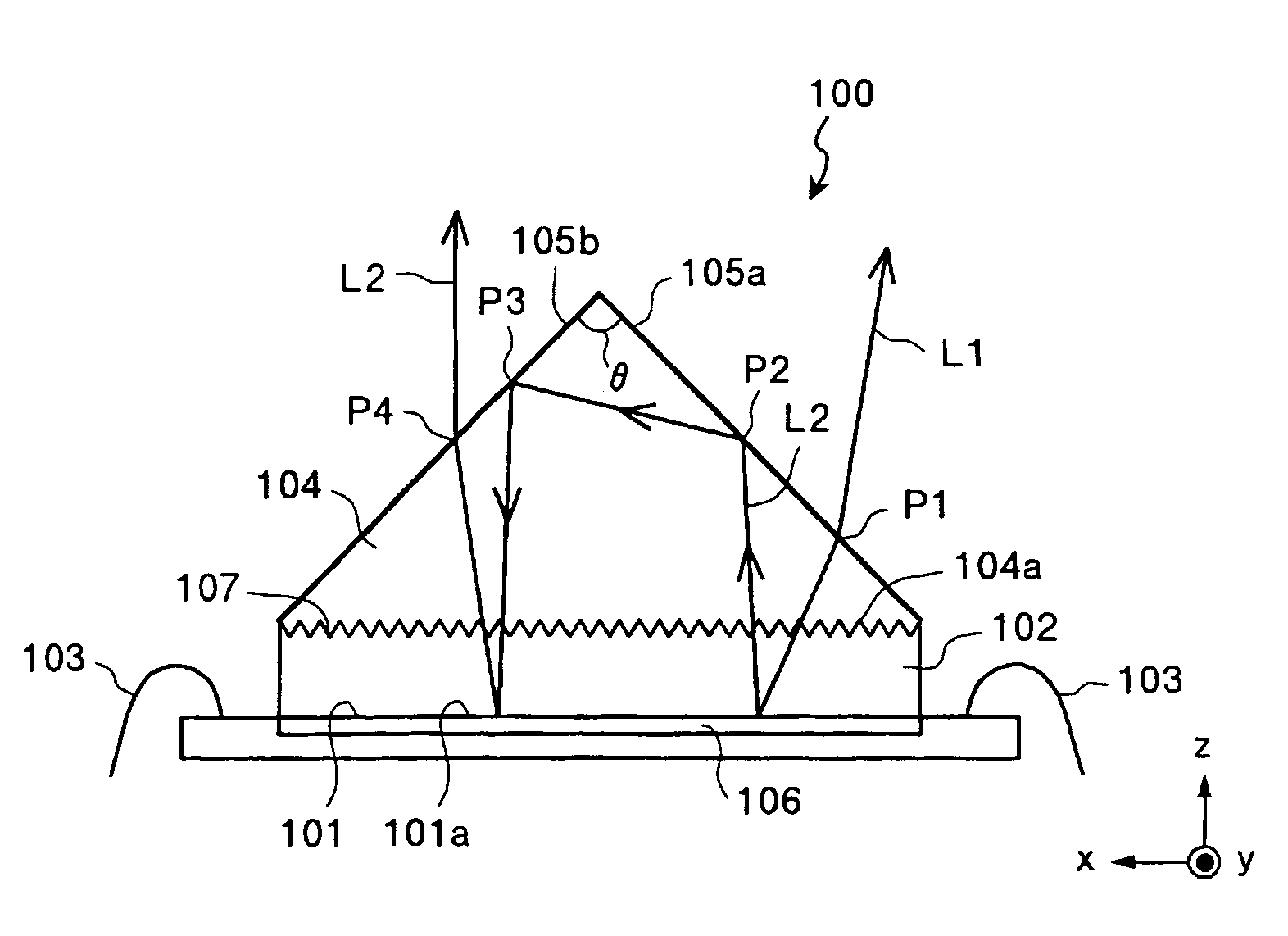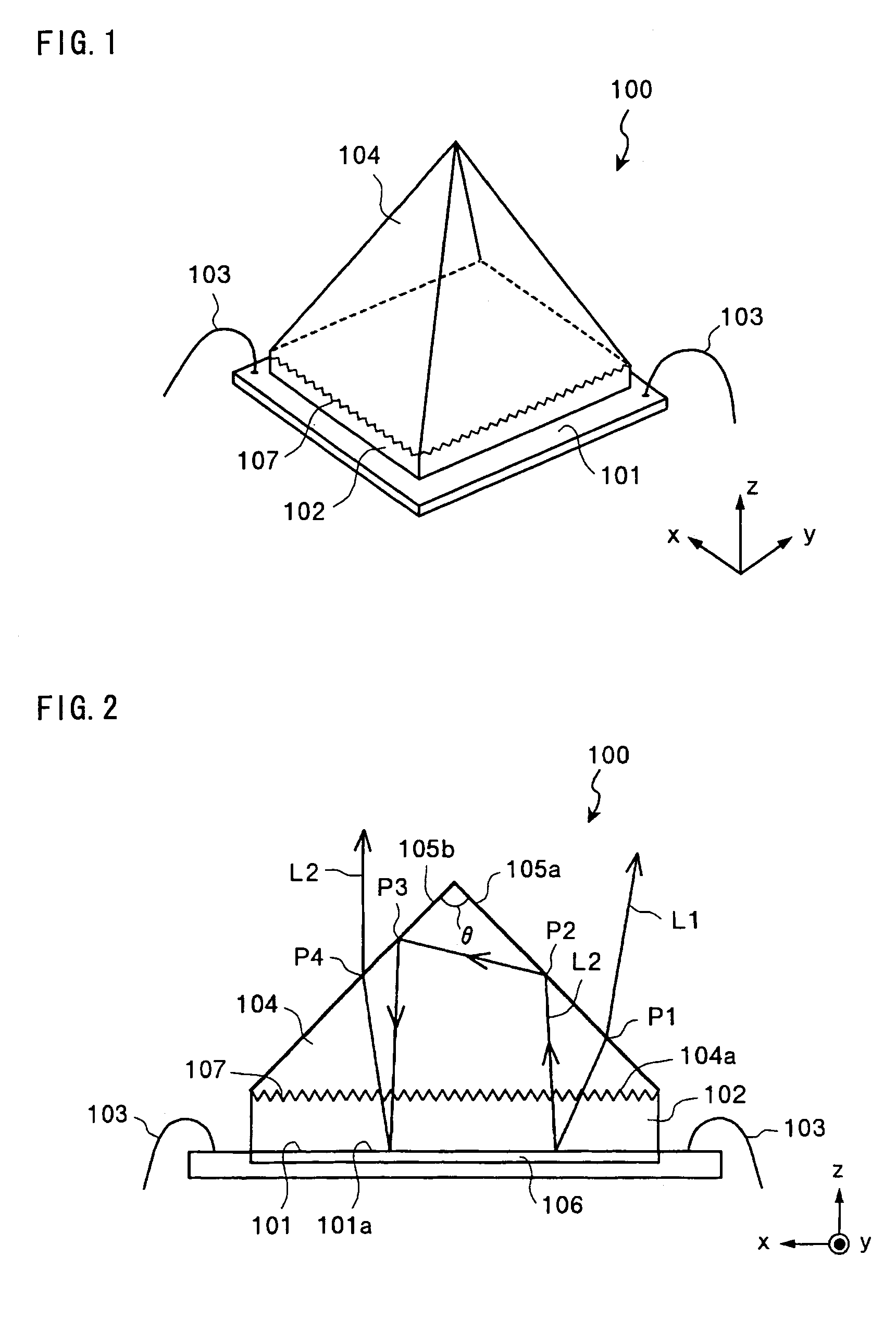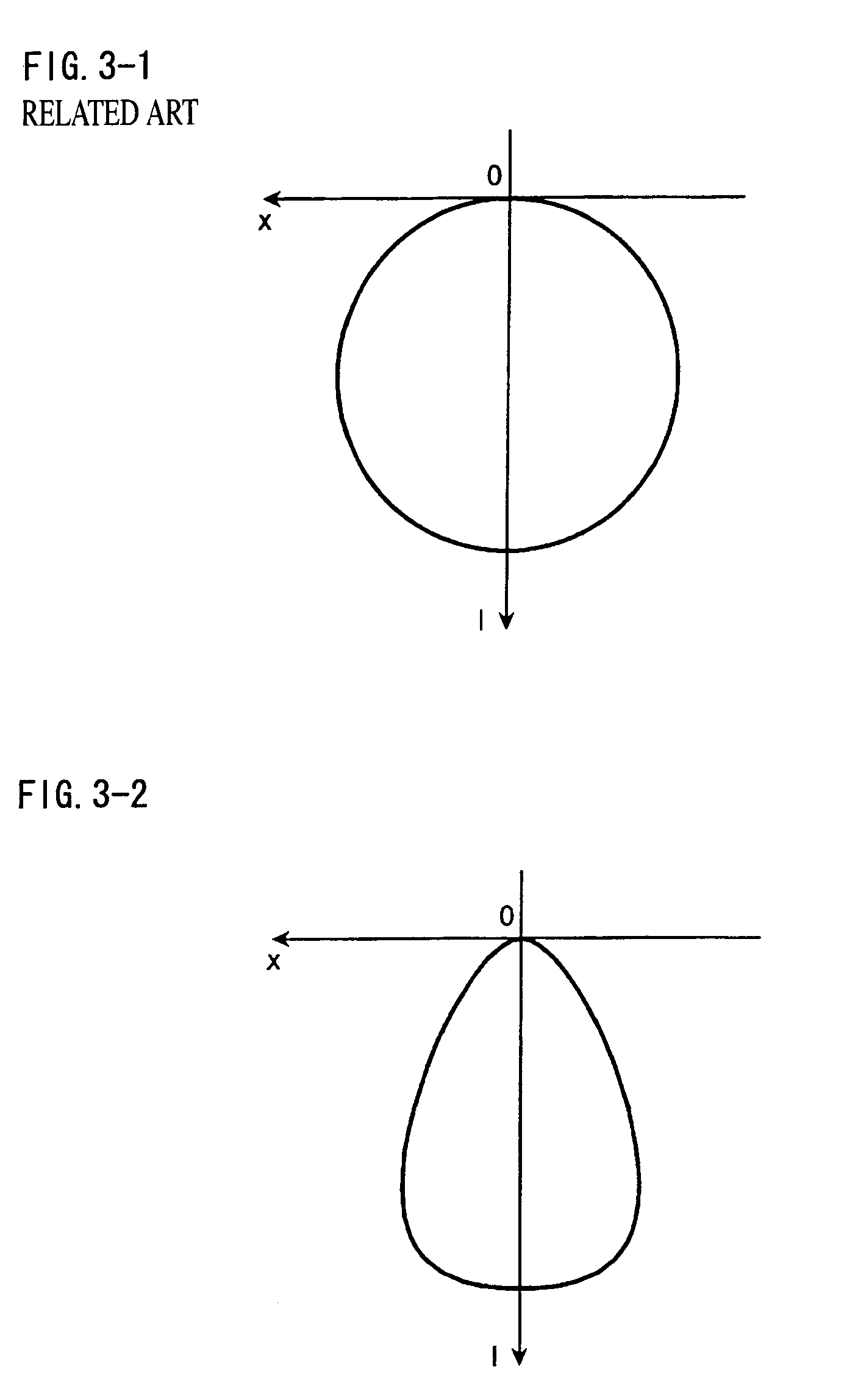Light source unit and projector
a light source and projector technology, applied in the field of light source units and projectors, can solve the problems of difficult to efficiently collimate light, and difficult to effectively use the luminous flux from the light source part, so as to achieve enhanced light utilization efficiency, high light utilization efficiency, and the effect of increasing the rate of being transmitted through the polarization splitter film
- Summary
- Abstract
- Description
- Claims
- Application Information
AI Technical Summary
Benefits of technology
Problems solved by technology
Method used
Image
Examples
exemplary embodiment 1
[0033]FIG. 1 is a schematic of a light source unit 100 according to exemplary embodiment 1 of the invention. The light source unit 100 is a surface emitting LED. Further, FIG. 2 shows the sectional constitution of the light source unit 100. In FIG. 2, a surface emitting part 101 is formed by allowing a crystal of Ga, In, N, or the like to grow on a sapphire substrate 102. On ends of the surface emitting part 101, bonding wires 103 are provided. The surface emitting part 101 emits light with substantially equal intensity in all directions from a planer emitting region 101 a. That is, the surface emitting part 101 functions as a so-called Lambertian surface. Additionally, on one surface side of the surface emitting part 101, a reflecting metal electrode 106 as a reflecting part is provided. Further, on the other surface side of the surface emitting part 101, a square pyramid prism 104 including an optical transparent member of high refractive index glass is fixed with an optical adhes...
exemplary embodiment 2
[0042]FIG. 5 is a schematic of a light source unit 500 according to exemplary embodiment 2 of the invention. The square pyramid prism is used in exemplary embodiment 1, but exemplary embodiment 2 is different in the point where a conical prism is used. Other basic constitution is the same as in exemplary embodiment 1, and the same parts as in exemplary embodiment 1 are assigned with the same signs and overlapping description will be omitted. The light source unit 500 is a surface emitting LED. A circular surface emitting part 101 is formed by allowing a crystal of Ga, In, N, or the like to grow on a sapphire substrate 102. On ends of the circular surface emitting part 101, bonding wires 103 are provided. The surface emitting part 101 emits light with substantially equal intensity in all directions from a planer emitting region. That is, the surface emitting part 101 functions as a so-called Lambertian surface. Additionally, on one surface side of the surface emitting part 101, a ref...
exemplary embodiment 3
[0044]FIG. 6-1 is a schematic of a light source unit 600 according to the exemplary embodiment 3 of the invention. The exemplary embodiment is different from exemplary embodiment 1 in the point where polarized light in a specific vibrating direction is output in a specific direction. The same parts as in the above described exemplary embodiment 1 are assigned with the same signs and overlapping description will be omitted. The light source unit 600 is a surface emitting LED. Further, FIG. 6-2 is a view of the light source unit 600 seen from the direction of an apex angle θ of a square pyramid prism 604 (z axis direction). The apex angle θ is 90°. In FIG. 2, a surface emitting part 101 is formed by allowing a crystal of Ga, In, N, or the like to grow on a sapphire substrate 102. On ends of the surface emitting part 101, bonding wires 103 are provided. The surface emitting part 101 emits light with substantially equal intensity in all directions from a planer emitting region. That is,...
PUM
| Property | Measurement | Unit |
|---|---|---|
| apex angle | aaaaa | aaaaa |
| angle | aaaaa | aaaaa |
| refractive index | aaaaa | aaaaa |
Abstract
Description
Claims
Application Information
 Login to View More
Login to View More - R&D
- Intellectual Property
- Life Sciences
- Materials
- Tech Scout
- Unparalleled Data Quality
- Higher Quality Content
- 60% Fewer Hallucinations
Browse by: Latest US Patents, China's latest patents, Technical Efficacy Thesaurus, Application Domain, Technology Topic, Popular Technical Reports.
© 2025 PatSnap. All rights reserved.Legal|Privacy policy|Modern Slavery Act Transparency Statement|Sitemap|About US| Contact US: help@patsnap.com



